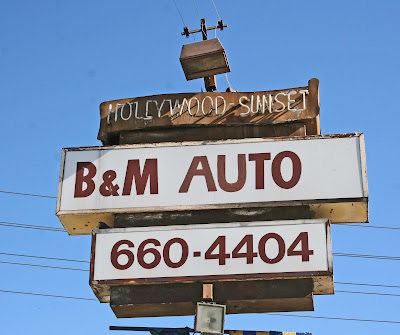It probably amazes me even more than it does you, but there was an occasion last year when I found myself at a party, sitting at a table between Werner Herzog and T-Bone Burnett. Or to put it another way, between the man who wrote Of Walking In Ice and the man who put together the soundtrack for the movie Walk The Line.
Herzog’s work I knew reasonably well, Burnett’s not so much, although I was aware he’d been part of Dylan’s Rolling Thunder Review and was involved with the music for O Brother Where Art Thou. He seemed a cheery man, rather more so than Mr. H, and when I got home I did some research on him.
I found an interview with Los Angeles magazine in which he said that after more than twenty-five years of living here, “I love Los Angeles, even though in some ways I feel like I barely know it. Hollywood I felt like I knew before I even got here.” Which is a feeling a lot of us have.
I also found a great song of his titled “Hollywood Mecca of The Movies.” I’m sure you can find it on youtube, or you could even buy it. It’s a pretty great song: big spacious percussion, lean guitar by Marc Robot, and Burnett delivering more or less spoken lyrics that include the lines:
It's a mortal cinch, No resilience
We didn't build this place to last forever
What A Town, What A Great Town
Only afterwards did I learn that Hollywood Mecca of the Movies was also the title of a book by Blaise Cendrars, originally a series of newspaper articles written in 1936 for the newspaper Paris-Soir. The song is way better than the book, if you ask me. Though when it comes to snappy dressing, I think M. Cendrars is probably the winner.
Cendrars was in town for just two weeks, seems to have met almost nobody, and ended up relying on every cliché in the book. Maybe he felt like he knew the place before he even got here. The sun shines but everyone’s unhappy, Hollywood is an “illusion factory,” writers are treated with contempt, talent scouts are “birds of prey.” And, all too inevitably, he writes a chapter titled “In Hollywood, anyone who walks around on foot is a suspect.” (Can anyone walk around other than on foot? Though I suppose we might have to blame the translator for that one.)
He describes staying in the Roosevelt Hotel on Hollywood Boulevard, from which he goes for a walk after midnight. A large black car pulls up, two cops jump out and grab him by the arms. They ask his name. For unimaginable reasons he says Roosevelt though they don’t seem to object to that. I would have. Then they bundle him into the car and deposit him “a few hundred feet ahead of my hotel.”
Next morning he tells the story to his friends who explain that it happened “because it never occurs to them (the cops) that one might walk in a city like Hollywood, where there are more cars than people!” They also say he was lucky the cops didn’t beat him up, which is the only part of the story that seems remotely credible to me.
John Paul Jones of Led Zeppelin has a similar story, but I think he got picked up because he was jaywalking as opposed to simply walking; jaywalking being a concept pretty much unknown in Britain.

And of course there’s the short story by Ray Bradbury titled “The Pedestrian” about some future non-walking society in which our hero wanders the streets at night and is picked up by a robot police car and sent to the “Psychiatric Center for Research on Regressive Tendencies.” Bradbury claimed he wrote the story after being stopped and interrogated by cops as he was walking innocently on Wilshire Boulevard.
How refreshing then to come to John Mayall, he of Bluesbreakers fame. Mayall was, I suppose still is, an Englishman who went native in LA in the late 1960s. His album Blues From Laurel Canyon contains the song “Walking on Sunset.” Again, you could buy it if you wanted. It has some pretty ropey lyrics, including:
The cops are in the cars but they never bothered me
A new magic world where I never felt so free
I'm walking on sunset, well I'll never reach the end
I'm walking on sunset, everything is like a friend.
Well this strikes me as, at best, a slightly naïve response – I have seen many things on Sunset that didn’t look remotely like a “friend,” still at least he’s not just repeating the received opinions about walking in LA. Good for him. Good for all of us.










































